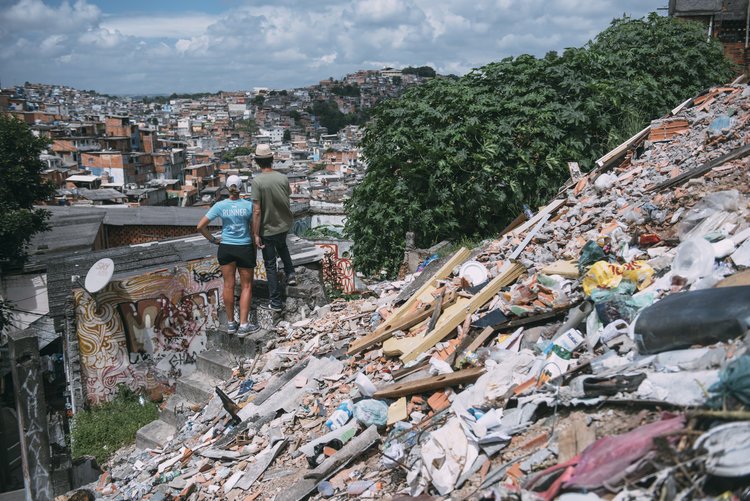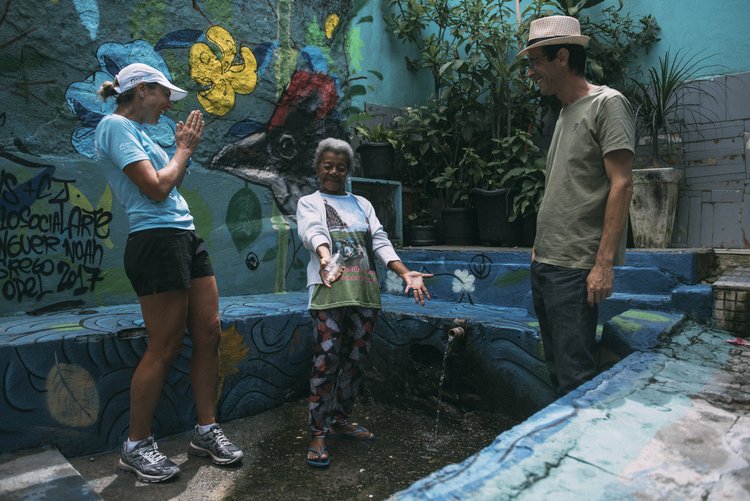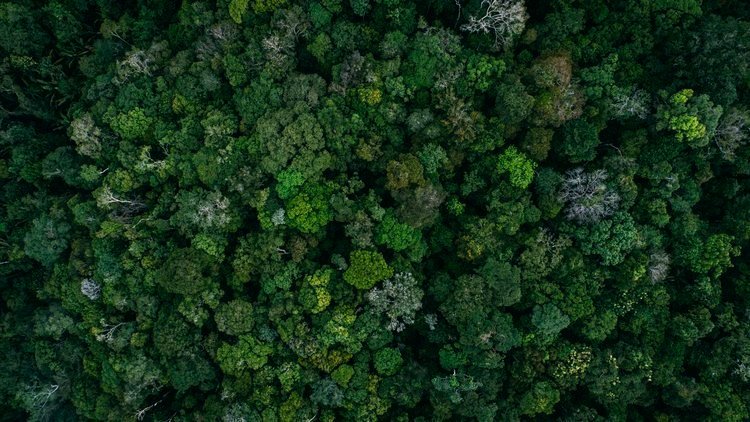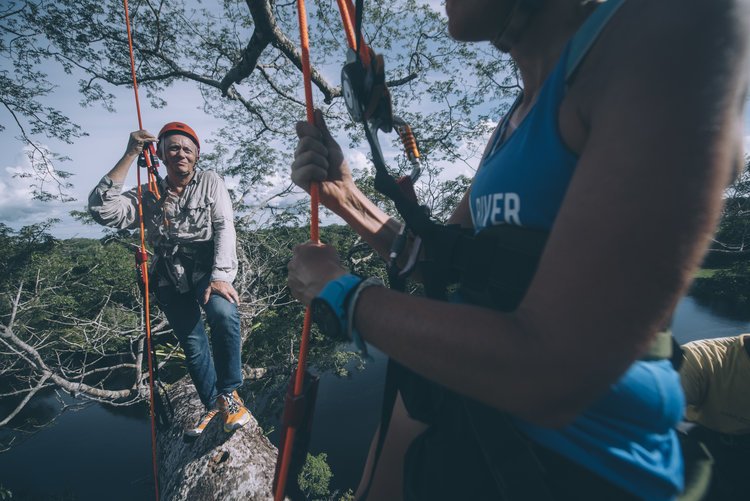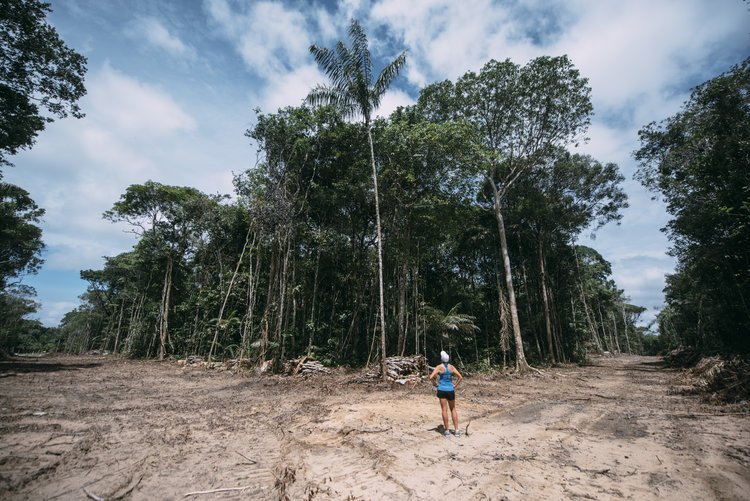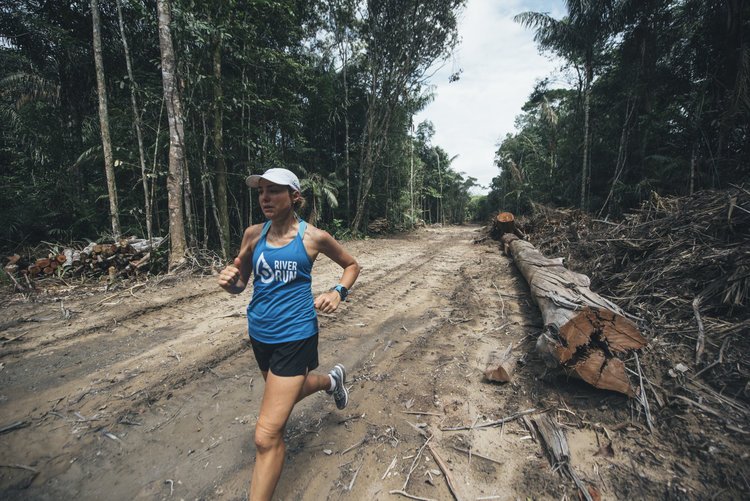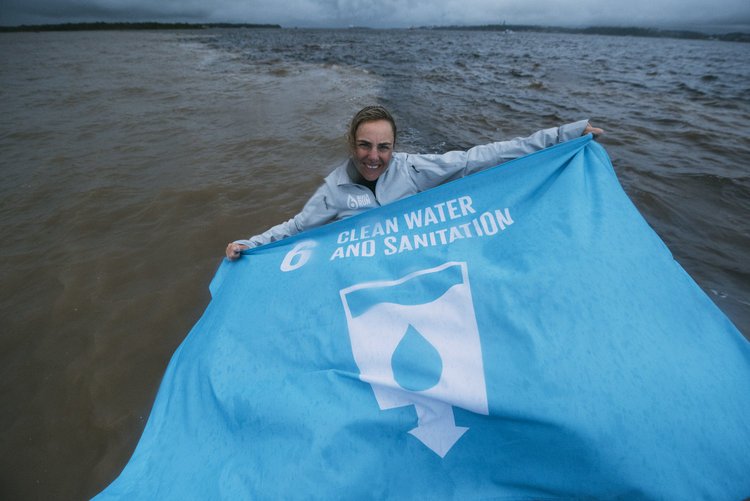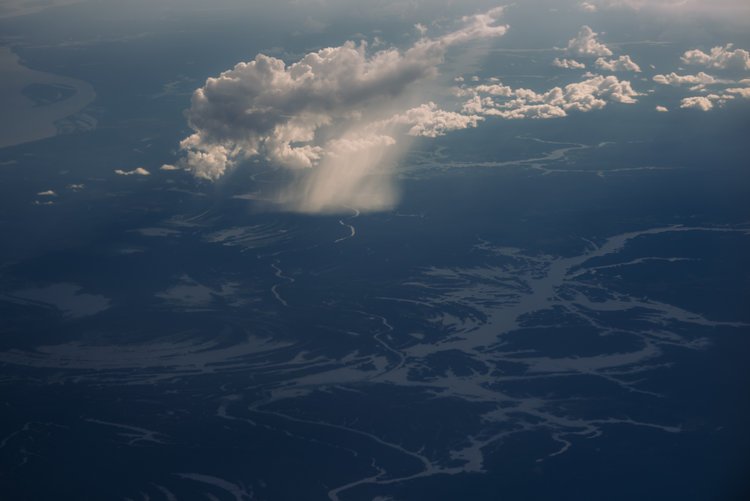HOW DID A CITY IN THE WORLD'S MOST WATER RICH COUNTRY RUN OUT OF WATER?
The Flying River. Photo by Kelvin Trautman.
I’m suspended in a tree high above the Amazon River, and from this vantage point I can see the incredible canopy of green that shrouds the banks of this mighty waterway. The trees fill every space until they meet the horizon. The only gap is the big blue divide that snakes through this jungle.
The Amazon River is the largest river in the world, and some say the longest river in the world. The rainforest that surrounds it covers about one percent of the earth’s surface [6.7 million square kilometers], but produces 20% of the world’s flowing fresh water.
It is here in this magical place that I learned about Brazil’s ‘flying rivers’. These rivers move above the canopy of trees and are just as important as the Amazon River. The trees in this vast rainforest that I am in work like bionic pumps, and suck up water from the ground. This water is then released into the atmosphere in the form of vapor, and swept back into the continent by air currents.
Comprising billions of tons of water vapor, these ‘flying rivers’ provide water to South America, and benefit the countries surrounding the river, including Brazil, Bolivia, Peru, Ecuador, Colombia, Venezuela, Guyana, and Suriname. The flying rivers also play a critical contributory role to the world’s climate and weather.
But the Amazon is under threat. National Geographic reports that “during the past 40 years, close to 20 percent of the Amazon rainforest has been cut down.” Scientists say that if another 20 percent of the rainforest is lost the Amazon’s ecosystem will begin to collapse. Currently the biggest threat to the Amazon is cattle ranching, particularly illegal cattle ranching.
A report in The Guardian newspaper details a three year investigation into cattle farms by Greenpeace. It exposes how loggers have made inroads to the edge of the forest in the states of Para and Mato Grosso in northern Brazil.
The cattle farmed in areas that once was rainforest is transported offshore to Europe and other countries where they are found in multiple products. This includes meat, canned goods, processed foods, as well as leather for shoes and trainers. The fat from the bovine beasts is turned into soap, toothpaste and beauty creams. Gelatin from the hooves and bones is put into dairy products and sweets.
The ongoing destruction on the Amazon and the impact it has had on the ecosystem’s flying rivers has already shaken the region. In 2015, Sao Paulo, Brazil’s largest city and home to over 20 million people faced its worst water crisis in over 80 years. When I arrived in the country my first stop was in Sao Paulo and I heard, first hand, devastating and terrifying stories about how families had to survive for days without water.
Despite a drought, and warnings from scientists and activists, the government failed to initially react, or plan adequately for the water crisis. The state only leaped into action when reservoirs hits some 15%. But the crisis didn’t end - it became so bad that the local water reservoirs emptied, despite water restrictions, and all that was left was a thick, muddy sludge.
The worst hit area was the poorer region of the city, called the Periferia. Wealthy people in affluent suburbs bought water in bottles and installed water tanks, while less fortunate people were unable to do this and suffered greatly.. But a hero arose during the crisis — his name is Adriano Sampaio. I was fortunate to meet with Sampaio recently, and learned all about his work to identify underground rivers and natural springs. During those terrible times Sampaio’s wisdom brought some relief and a way forward until the drought ended.
#Run4Water brought me to Sao Paulo, and I was able to play soccer with local kids and run with them in the street during my journey of 1,049 miles [1,688 kilometers], to focus the world’s attention on the need to contain our water usage. It is heartbreaking, unimaginable, to think of what these kids had to endure in 2015. No one should ever have to protest, fight or suffer because of a lack of water again.
What can you do to help? As I said earlier, the biggest contributor to deforestation is agricultural. Ensure that you know the origin of the food you eat, shoes you wear, and the beauty products you use. Don’t ever use anything or eat anything that could negatively impact the Amazon.
There are multi-national corporations planning infrastructure projects in the Amazon Basin. Make sure you know about these, and educate yourself on the potential impact of these commercial ventures.
Finally, please sign the virtual flag as a demonstration of your commitment to support Goal 6 of the United Nations Sustainable Development Goals -- which is to ensure clean, safe, accessible water for all.
Bye-bye from the Amazon, second river of the 6 River Run.
#Run4water = 611 km down, 1,077km to go.
Obrigada por tudo, beautiful Brazil!
